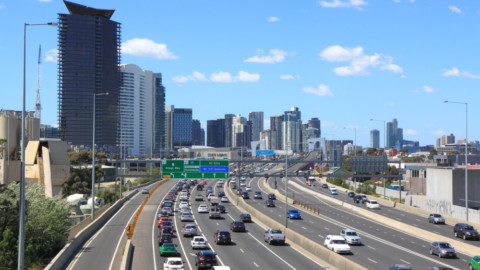by Arjan Rensen, Manager Roads & Transport Directorate, The Institute of Public Works Engineering Australasia (IPWEA) NSW.
The Institute of Public Works Engineering Australasia (IPWEA) NSW and ACT Division has collaborated with four councils to trial the use of machine learning, video and Artificial Intelligence in the assessment of road conditions. Here are their findings.
In their roles as road operators, councils deliver safe and reliable road infrastructure to the community. Detecting and repairing defects like potholes, pavement cracking, damaged guardrails and fading line marking, is essential to achieving this, with councils repairing thousands of defects each year.
Defects are reported by the community or by council staff inspecting the network. As a result, defects are only known when they already pose a risk to the community.
Early detection of road defects will improve maintenance planning, reduce risks for road users and ultimately assist Council to deliver better road infrastructure to the community.
Currently, no systems are implemented that automate this process effectively. The implementation of artificial intelligence-based defect detection technologies is an emerging market that will have wide ranging impacts to the management of road and pavement assets, particularly for local government agencies tasked with their maintenance and upkeep.
In this trial, we tested technology including video footage and machine learning algorithms for asset identification and for detecting road defects.
The cameras were mounted to council vehicles such as garbage collection trucks and vehicles from inspectors or rangers, that already drive the network route on a regular basis.
This initiative is a collaboration between the Roads and Transport Directorate and Canterbury Bankstown City, Georges River, Blayney Shire and Central Coast Councils.
Why is this technology needed?
There are 128 local councils in New South Wales that deliver a wide range of services, influenced by population density, demographics, the local economy, technology, geographic and climatic characteristics.
The combined net value of NSW local government assets was $166 billion. The gross value of NSW regional and local roads, bridges, and ancillary assets e.g. footpaths and other road assets, was estimated at $60 billion in June 2019.
Roads and transport assets are the most valuable assets managed by local government. Evidence collected by the Roads and Transport Directorate shows that the annual shortfall for maintenance is $350 million.
Utilising artificial intelligence provides an extensive view of asset condition in a time-efficient manner, capturing real-time data on the condition of the entire road network.
This allows councils to detect and address defects in a timelier manner and without reliance on customer complaints. Early intervention repairs saves costly repairs if not addressed.
This network-wide visibility ensures all defects are captured, including those that are unreported by residents. It can also be used in an assessment of needs for planned asset renewal.
The trial
Better understanding of the assets and early intervention will reduce the shortfall as available funding could be spent more effectively.
Early detection will allow for a defect to be repaired before it becomes a risk to the community, at significantly reduced costs. Increased efficiency will ultimately help councils to deliver better road and transport infrastructure to the community.
Overall customer satisfaction will increase if there are less unrepaired potholes and other defects on the network, and so will the amount of damage to personal vehicles, bicycles and, potentially, people.
The trial included routes within each of the four local government areas and a reference loop in Revesby Heights. The target length of the roads surveyed are shown in the table.
The data collected was evaluated by all partners, including visual inspection. Pavement Management Services was engaged for further data analysis and to compare the results with existing condition data.
Seven suppliers of the technology were identified: Black Moth Vision Systems, Retina Visions, Vaisala RoadAI, Frontline Data Systems, Mobileye, RoadBotics and EagleSoft.
Results identified defects
The technology tested is suitable to detect many of the defects included in the Road Inspection Manual. Visual assessment and validation of the data showed over 70 per cent accuracy in defect identification, which will be
compared more closely in future evaluations.
Based on the evaluation, each of the systems offers potential applications to which they could be suited. Further developments will improve the outcomes generated for each system.
The current viability of machine learning technologies for council implementation is explored in this project. Whilst feedback from participating councils included improvements of user experience still to be made, the interest and potential to implement these systems into existing council practices were expressed overall.
The technology tested is suitable to detect many of the defects included in the IPWEA Road Inspection Manual, with online training available soon.
The next stage and future challenges
For the next stage, we aim to deliver a digital platform ‘AssetAI’. AssetAI will utilise real time data and artificial intelligence to help governments make better, evidence-based decisions about how to improve the productivity, liveability and resilience of public assets.
The implementation of new data sources does not come without challenges. It is a new data source that produces a significant volume of data.
Current data standards will need to be updated to accommodate data from new and additional sources. This is a general challenge for the introduction of Internet of Things (IoT) and big data concepts.
Having more information about the condition of the network could have a significant impact on the financial sustainability of councils.
Current estimates of the value of public assets are only partially based on the actual condition of assets. If the calculation of the asset values is based on actual condition data, this could change the fair value significantly.
About the Roads and Transport Directorate
The Roads and Transport Directorate is a joint initiative between the Institute of Public Works Engineering Australasia NSW Division and Local Government NSW to optimise roads and transport outcomes. The Directorate is funded by all 128 NSW councils. The purpose of the Directorate is to support our member councils to deliver an improved local road and transport network. To succeed in this task, the Directorate undertakes leadingedge road and transport research which underpins our input to policy development, our advocacy initiatives and our published guidance on the design, construction and management of the road network and its associated infrastructure.





















